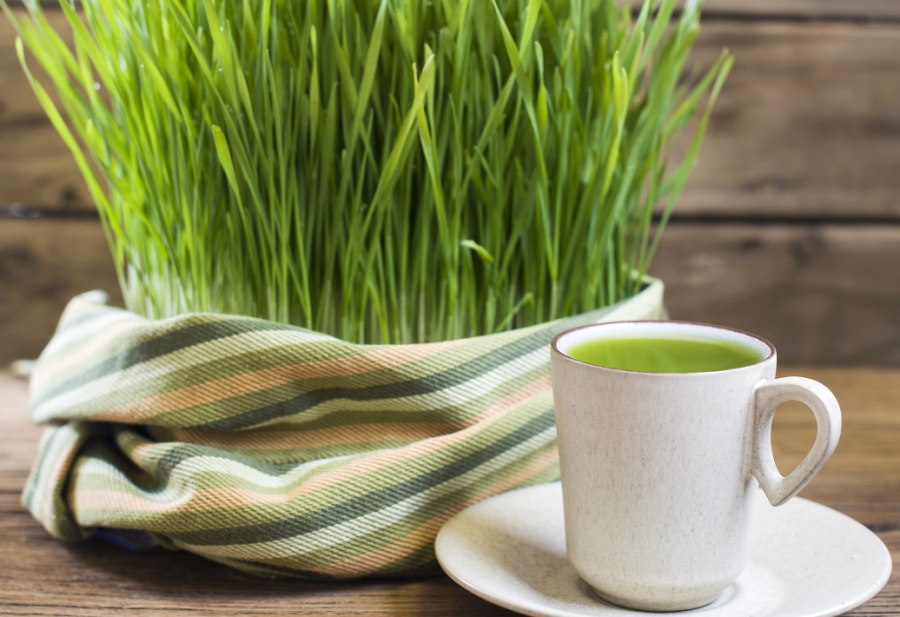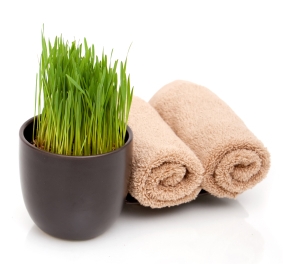
Growing wheatgrass indoors is a delightful winter activity. It’s not only easy to grow, lovely to look at, useful, versatile, and decorative; but it’s good for you too.
It adds a welcome splash of springtime to any room on a dreary winter day. It can be used at a moment’s notice to create a colorful, inexpensive centerpiece for your dinner or buffet table. And, if you go organic, it’s loaded with protein, chlorophyll, calcium, magnesium, iron, phosphorus, and potassium; as well as every known amino acid, vitamin, mineral, and essential fatty acid for a super healthy boost for you and your pets.
Who could ask for anything more from a simple house plant?
Let’s grow some wheatgrass

Here’s what you’ll need:
Bowl
Colander
Paper towels
Decorative pot
Potting soil
Spray bottle, filled with water
Plastic wrap
Directions
- Put wheatgrass seed into a bowl. Pour in enough water to cover the seed completely. Place the bowl in a sunny spot, and let the seed soak for 12 hours.
- Using a colander, lined with a damp paper towel, drain the water. Rinse well. Repeat the 12-hour soak/drain/rinse, as needed, until the seeds begin to sprout.
- Fill a decorative pot with soil about 3/4 full. If possible, leave 1-inch from the top of the pot. Pat the soil gently to level it—don’t firm it. Spray with water to dampen. Sprinkle sprouted seeds evenly over the soil so they touch, but are not stacked on top of each other. Do not press the seeds into the soil.
- Cover loosely with plastic wrap, allowing for air circulation, and place pot in a dimly lit, warm location for 3-4 days.
- Water, once in the morning and once at night, to keep the soil slightly moist, but not wet. A temperature of 60-70 degrees F works best. If you start noticing mold, decrease water and loosen the plastic to allow more air to circulate.
- When the grass reaches 1.5 inches, remove the plastic wrap and place in a sunny location where it will receive at least six hours of good light during the day. The more sunlight you give it, the greener your wheatgrass will be. Continue watering, as needed, to keep the soil moist.

It takes 7 or more days for wheatgrass to fully mature. It depends on the temperature, watering, and light.
Be prepared to “mow” often. Wheatgrass grows surprisingly fast, but it’s not the type of plant that lives on and on. Eventually, you’ll need to replant seeds and repeat the process if you want to keep green grass growing continuously.


Share Your Thoughts